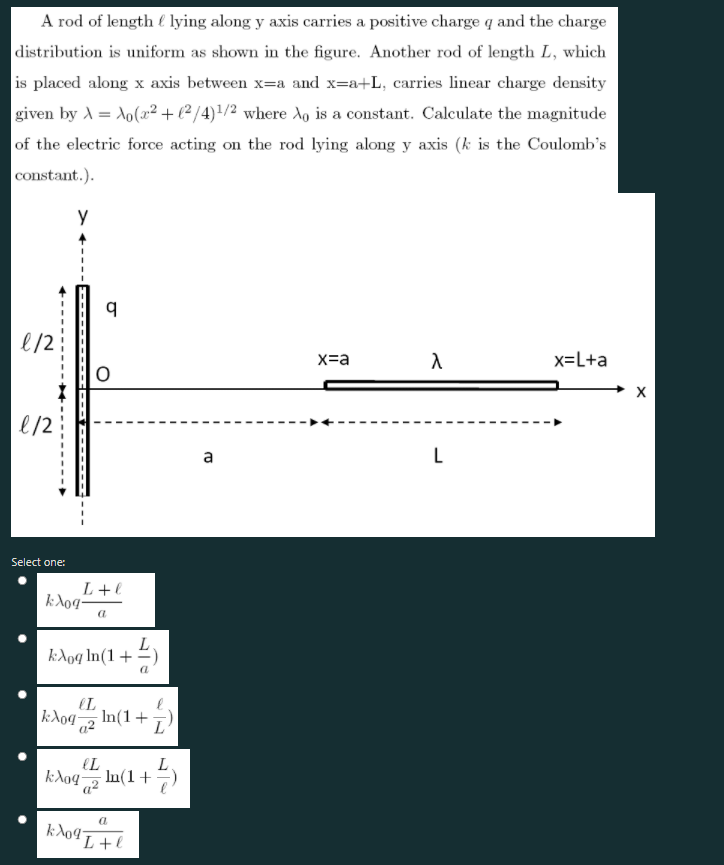A rod of length ( lying along y axis carries a positive charge q and the charge distribution is uniform as shown in the figure. Another rod of length L, which is placed along x axis between x=a and x=a+L, carries linear charge density given by A = Ao(x² +(²/4)/2 where Ao is a constant. Calculate the magnitude of the electric force acting on the rod lying along y axis (k is the Coulomb's constant.). e/2 x=a x=L+a l/2 a L ielect one: L+l kAoq- a L. kAoq In(1+=) EL In(1+ a2 €L kλogln (1 + L+l
A rod of length ( lying along y axis carries a positive charge q and the charge distribution is uniform as shown in the figure. Another rod of length L, which is placed along x axis between x=a and x=a+L, carries linear charge density given by A = Ao(x² +(²/4)/2 where Ao is a constant. Calculate the magnitude of the electric force acting on the rod lying along y axis (k is the Coulomb's constant.). e/2 x=a x=L+a l/2 a L ielect one: L+l kAoq- a L. kAoq In(1+=) EL In(1+ a2 €L kλogln (1 + L+l
Related questions
Question

Transcribed Image Text:A rod of length ( lying along y axis carries a positive charge q and the charge
distribution is uniform as shown in the figure. Another rod of length L, which
is placed along x axis between x=a and x=a+L, carries linear charge density
given by A = Ao(x2 + (²/4)!/2 where Ao is a constant. Calculate the magnitude
of the electric force acting on the rod lying along y axis (k is the Coulomb's
constant.).
l/2
x=a
x=L+a
l/2
a
L
Select one:
L+l
kAoq-
a
L
kλogIn (1 +
a
EL
|kAoq In(1+
a2
L.
- In(1+
a2
a
L+l
Expert Solution
This question has been solved!
Explore an expertly crafted, step-by-step solution for a thorough understanding of key concepts.
This is a popular solution!
Trending now
This is a popular solution!
Step by step
Solved in 2 steps with 1 images
